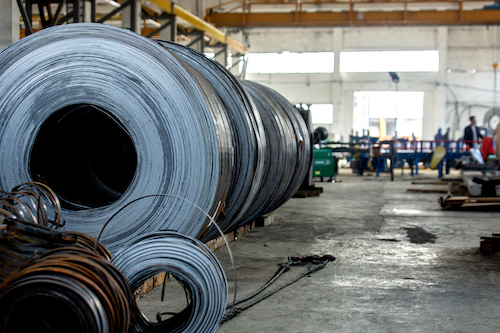The world must reach net-zero emissions by 2050 to avoid the worst effects of climate change. This is no easy feat, but one clear solution could lie in industry emissions.
Globally, industry emissions are responsible for 27 percent of our CO2 emissions, second only to the power sector. Four materials are responsible for up to 60 percent of these industry emissions — steel, cement, chemicals and aluminum — reaching a total of 7.1 Gt CO2 per year.
Given that demand for these materials is expected to increase over the coming years under a “business as usual” scenario, successfully decarbonizing these materials is critical to solving the climate crisis. In this effort, the circular economy can play a key role.
Opportunity
Even for steel and aluminum — which are in principle infinitely recyclable — around 15 to 25 percent of materials are not collected for recycling at their end of life. Additionally, only 8 percent of concrete is collected for recycling with most discarded as construction or demolition waste. Furthermore, closed loop recycling is still rare in all materials as significant downcycling reduces their value.
For steel and aluminum — which are in principle infinitely recyclable — around 15% to 25% of materials are not collected for recycling at their end of life.
Demand for these materials is focused on just five industries: construction/infrastructure; transportation; consumer goods; machinery; and packaging. In fact, these industries account for more than 90 percent of the consumption of global steel, aluminum, cement and chemicals. It is therefore crucial to involve them in implementing and scaling circular economy solutions for hard-to-abate materials.
Solutions and challenges
Four major levers will enable emissions reduction from circular economy approaches when it comes to these materials and heavy industry overall. Understanding these strategies — and what will make them successful — can help focus efforts and speed global efforts to mitigating the effects of climate change. These levers include:
- Increasing product use. Maximizing the use cycles of products or their components or increasing the intensity of use to reduce the amount of new products needed.
- Replacing materials or products. Considering circular alternatives can help preserve resources and the availability of materials while creating a more circular, resilient system.
- Reducing material per product. Rethinking how materials are used can optimize product design and make production more efficient.
- Recycling material for new products. Such an approach can protect virgin material while promoting the trade and circulation of recyclables.
Of course, these strategies are not simple to deploy. While “circularity” has gained momentum in recent years, many solutions are not yet implemented at scale. Additionally, individual companies looking to put circular solutions in place face a range of challenges, including a lack of access to materials and even a lack of capability. Complexity is its own challenge as many circular solutions involve a range of players along the value chain, often with companies and stakeholders that have limited interaction with one another.
Collaboration
To scale such approaches, industry collaborations will be key. For the four focus materials, this means bringing together material producers with large industrial users of these materials (namely from the built environment/infrastructure, transportation, consumer goods, packaging and machinery/mechanical engineering sectors). Platforms that bring these actors together, that provide guidance, can help leaders bridge capability gaps and develop new processes.
Policy makers also play in important role. These leaders have a range of tools at their disposal to support the implementation and scaling of circular solutions. These tools can include financial incentives, market regulation or even public procurement targets.
In addition to industry collaborations, technological innovations can scale change. Technology can ensure that solutions can be implemented on a wide scale and are not held back thanks to prohibitive investment or a lack of cost competitiveness. Through these collaborations between innovators, industry leaders and policy makers, leaders will develop new standards and new processes that will make circularity a reality.

